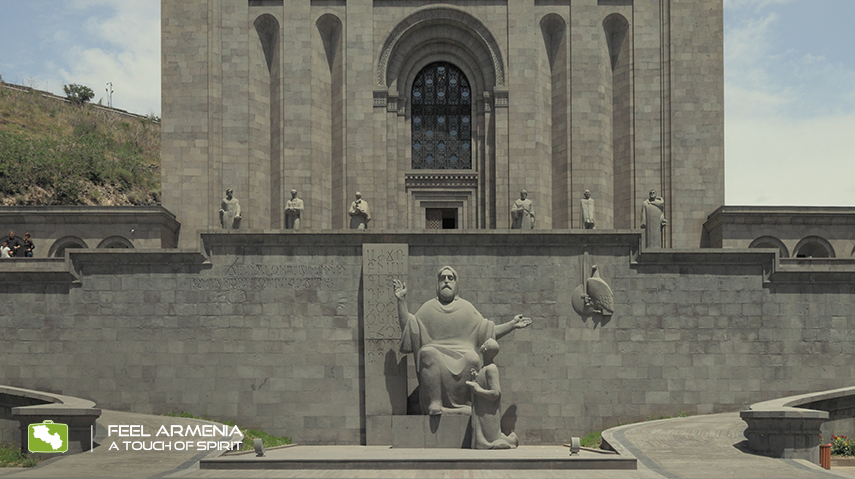2,800-Year-Old City at the Intersection of Europe and the Middle East, with a Fusion of Armenian, Western European, and Russian culture and tradition is no longer a ‘secret’ to world travelers
Yerevan, the capital of the Republic of Armenia, established in the 8th century B.C., is one of the oldest continually inhabited cities in the world. Yerevan celebrated its 2,800th anniversary in 2018. Although it has a western European ambiance, lined with wide boulevards and sidewalk cafes, remnants of Soviet-era buildings still exist following Armenia’s independence from the Soviet Union in 1991.
Armenia grants citizens from a long list of countries, including the United States, visa-free entry. There are no fees or paperwork for visitors as long as they have a valid passport, and tourists can stay in the country for up to six months.
Expect exceptional hospitality. In Yerevan, hospitality is king, and residents abide by the adage ‘A guest has a place over the host’s head,’ meaning the guest is more important than the host.
Armenia offers a great deal to different types of tourists. Some come for their ancient history, archeological sites, and monuments. In contrast, others are adventure travelers who choose to bike or hike through its nationwide trails, see the highlands, the waterfalls, and enjoy its ski resorts. Don’t miss the following ten attractions if you go to Yerevan.
- REPUBLIC SQUARE
Republic Square is the heart of Yerevan. It is to Armenia what Times Square, the Washington Monument, and the Capital Building Lawn are to American combined. This is where many demonstrations have taken place, including Armenia’s ‘Velvet Revolution’ in 2018. It is also a popular space for large-scale concerts, hosting the band ‘System of a Down’ several times.’
They call Yerevan the ‘Pink city’ for nothing. As you stand at the Center of Republic Square, you will notice that most buildings are built from volcanic bricks of varying shades of pink. I think the color reflects the fun and vibrant vibe of the city very well.
At night, the square’s spectacular water fountain show is a popular attraction. The water show is synchronized with epic music from classical masters, famous Armenian musicians, and contemporary artists.

2. CAFESJIAN CENTER FOR THE ARTS AND THE CASCADE COMPLEX
The Cafesjian Center for the Arts, located in The Cascade Complex, is dedicated to bringing the best of contemporary art to Armenia and presenting the best of Armenian culture to the world. Inspired by the vision of its founder, Gerard L. Cafesjian, the Center offers a wide variety of exhibitions, including a selection of important work from the Gerard L. Cafesjian Collection of contemporary art.
Having celebrated its grand opening in November 2009, CCA exhibits unique works of modern and contemporary art and offers a diverse program of lectures, films, concerts, and numerous educational initiatives for adults and children. Over one million people have visited the Center annually since its opening.
The building that now houses the Cafesjian Center for the Arts is well known to the Armenian people, especially those living in its capital city of Yerevan. Known as “The Cascade,” the complex was initially conceived by Alexander Tamanyan (1878–1936).
Construction of Torosyan’s design of the Cascade was launched by the Soviets in the 1980s but abandoned after the Armenian earthquake of 1988 and the break-up of the Soviet Union in 1991.
The Cascade is a giant stairway showcasing different fountains and sculptures on each level. You need to see for yourself to know the accurate scale of the Cascade. It is massive. At the top, you will be able to get an unobstructed view of Yerevan and Mount Ararat.
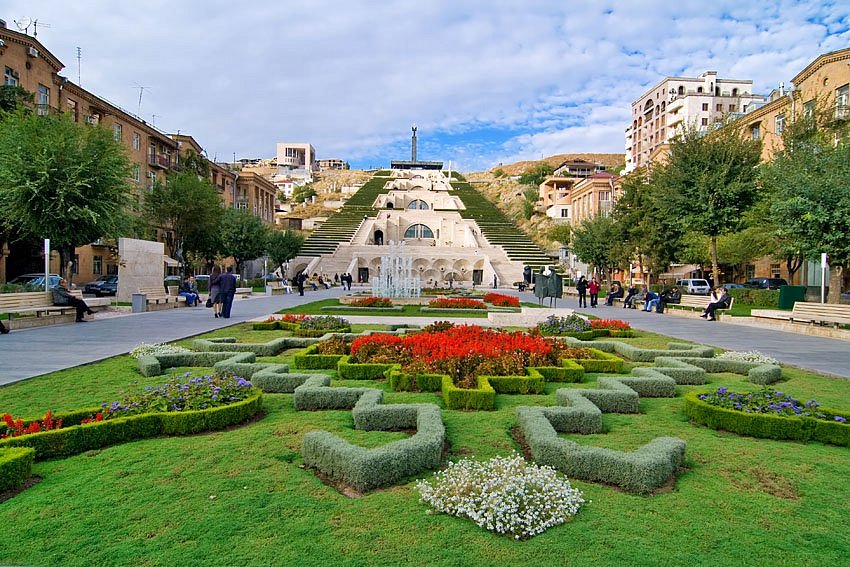
3. TSITSERNAKABERD ARMENIAN GENOCIDE MEMORIAL COMPLEX
Yerevan’s Tsitsernakaberd Memorial complex is dedicated to the memory of the 1.5 million Armenians who perished in the first Genocide of the 20th century at the hands of the Turkish government. Completed in 1967, the Genocide Monument has since become an integral part of Yerevan’s architecture and a pilgrimage site. Set on a hill and dominating the landscape, it is in perfect harmony with its surroundings. Its austere outlines convey the spirit of the nation that survived a ruthless campaign of extermination.
The Museum and Institute were opened in Tsitsernakaberd in 1995 to commemorate the 80th anniversary of the Armenian Genocide.
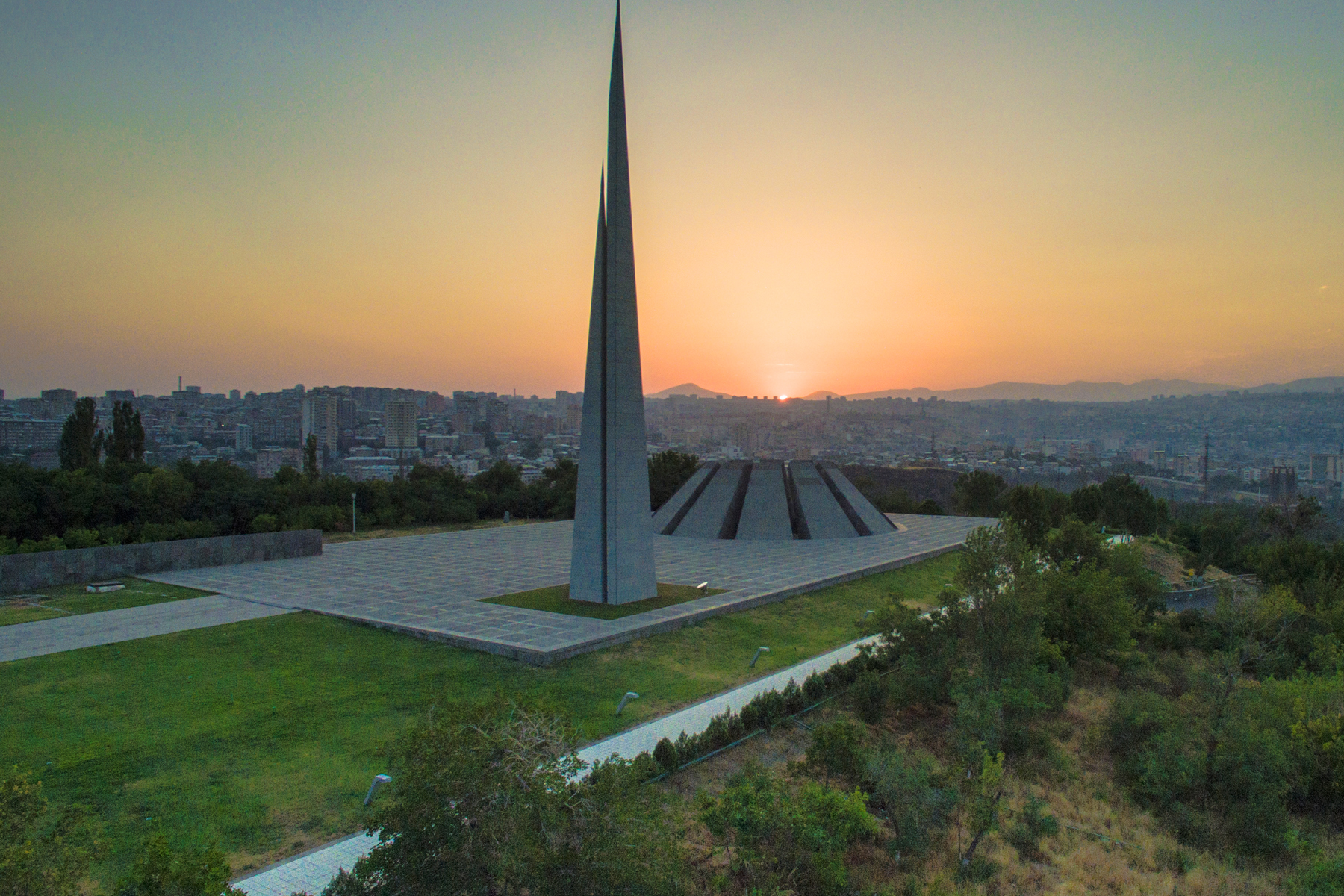
4. NORTHERN AVENUE
If you want to visit Yerevan’s answer to New York’s 5th Avenue, Los Angeles’ Rodeo Drive, and Paris’ Avenue Montaigne, then head over to Northern Avenue. Opened in 2007, the pedestrian-only street is located in downtown Yerevan and is home to luxury residential buildings, hotels, restaurants, nightclubs, and designer boutiques, including Armani, Burberry, and Ermenegildo Zegna.
In March 2019, a section of Northern Avenue was dedicated as Europe Square to celebrate the 70th anniversary of the establishment of the Council of Europe. The Vice-Speaker of the Parliament of Armenia, Alen Simonyan, stated, “Over the past 28 years following its independence Armenia, adhered to the pan-European values, continues building its cooperation in the European direction”.

5. MUSEUM COMPLEX OF THE MATENADARAN
Matenadaran, also known as the Mesrop Mashtots Institute of Ancient Manuscripts, has one of the largest and most valuable collections of manuscripts that include Armenia’s and other nations’ priceless documents.
The word ‘Matenadaran’ means ‘holder of manuscripts’ or ‘manuscript collector.’ Today, the Armenian public associates the word ‘Matenadaran’ with the nation’s spiritual and cultural richness and pride, embodied in the structure of the manuscript repository.
The Matenadaran has consolidated about 23,000 manuscripts, including almost all ancient and medieval Armenian cultural and sciences – history, geography, grammar, philosophy, law, medicine, mathematics, cosmology, chronology, divination literature, translated and national literature, miniature painting, music, and theater. The Matenadaran also holds manuscripts in Arabic, Persian, Greek, Ethiopian, Syrian, Latin, Tamil, and other languages. Many originals, lost in their mother languages and known only by their Armenian translations, have been saved from medieval translations.
The Matenadaran museum complex is in the institute’s old, original building. What was formerly a single exhibition hall now consists of fifteen halls in which thousands of temporary, changeable, and exclusive exhibits are on display. Manuscript, fragments of manuscripts, documents, old, printed books, precious bindings, individual miniatures, and more are shown from Matenadaran’s database of roughly 23,000 manuscripts.
6. ARARAT BRANDY FACTORY
Get to know the art of creating the legendary ‘Ararat’ brandies by visiting the museum in Yerevan. During the tour, you will get acquainted with the history of brandy-making that made Armenia famous and see the main stages of production. The tour ends in a tasting room, where you can taste several iconic brandies.
The history of the oldest brand of Armenian brandy began more than 130 years ago, in 1887, when the first brandy production in Armenia was founded. And today, ‘Ararat,’ presented in 35 countries, is the first global brand of Armenian cognac.

7. VERNISSAGE OPEN-AIR MARKET
Vernissage open-air exhibition market is one of the most enjoyable places to visit in Yerevan. Aside from souvenirs, you’ll find great Armenian folk art, unique jewelry, carpets, old paintings, and exclusive handmade masterpieces.
From the French word for ‘varnishing,’ Vernissage means preview or launch an art exhibition. Considering how many artists and craftsmen showcase their work here, it’s no surprise the market bears this name.
It was formed during the 1980s by Armenian artists who started to display their artworks in the square next to the Artists’ Union of Armenia (the current Charles Aznavour Square). Others have used the park next to Komitas State Conservatory to show their works. Later, the Vernissage was moved to Martiros Saryan garden in front of the Opera House. The exhibition market was gradually enlarged and finally moved to Aram and Buzand streets, starting with the Republic square metro station and ending with the statue of Vardan Mamikonyan. However, painters are still using the Saryan park to show their painting works.

8. OPERA HOUSE
Another wonder of Armenian architecture is the Armenian National Academic Theatre of Opera and Ballet building, named after Alexander Spendiaryan. Located in the heart of Yerevan, this building is another masterpiece of Alexander Tamanyan that was awarded the Grand Prize at the World Exhibition in Paris. The building is considered the symbol of music culture expressed through the architectural grace and classic splendor.
The Theatre of Opera and Ballet was officially opened on January 20, 1933. The building is round in shape. It consists of two concert halls with 1,400 seats and Aleksandr Spendarian Opera and Ballet National Theatre with 1,200 seats.
There is a round square in front of the Theatre of Opera and Ballet named ‘Azatutyun,’ meaning freedom, with the statue of the great Armenian poet Hovhannes Tumanian and composer Aleksandr Spendarian. The ‘Freedom square’ is a favorite with the locals.

9. EREBUNI FORTRESS & MUSEUM
Erebuni is one of the oldest existing fortresses, built in 782 B.C., and is the precursor to Yerevan. 2018 was thus the 2,800th anniversary of Erebuni-Yerevan.
Erebuni Fortress was founded by the king of Urartu, Argishti the First, who left written testimony upon building the castle. The fortress has not yet been fully explored and undoubtedly has secrets of the city’s history. Some major part of the 2800-year-old fortress did not endure to this day and was impossible to restore.
Erebuni museum displays the findings of excavations conducted on the remnants of the fortress. The permanent exhibitions of the museum showcase artifacts from the Urartu era, including but not limited to cuneiforms, weapons, belts, bracelets, and other pieces of jewelry made of gold and silver, statues, bronze ware, tableware, etc.
Diggings and archaeological excavations discovered areas where grain processing and wine practices had taken place. The jars and other pottery pieces had wine traces on them, affirming the high level of culture and traditions of the Urartian dynasty.

10. SAINT GREGORY THE ILLUMINATOR CATHEDRAL
The Saint Gregory the Illuminator Cathedral, also known as the Yerevan Cathedral, is the largest cathedral of the Armenian Apostolic Church. It is in the Kentron District (Central District) of Yerevan, the capital of Armenia. It is one of the largest religious buildings in the South Caucasus, along with the Holy Trinity Cathedral of Tbilisi (known as the Sameba Cathedral). Adjacent to the General Andranik metro station, it is visible from many areas of Yerevan.
The cathedral’s consecration took place on September 23, 2001, on the occasion of the 1700th anniversary of the proclamation of Christianity as the state religion of Armenia. The cathedral houses the relics of Saint Gregory the Illuminator and the Holy Remains of St. Gregory, brought from Naples, Italy. Shortly after the consecration of the cathedral, Pope John Paul II paid a visit to the cathedral.
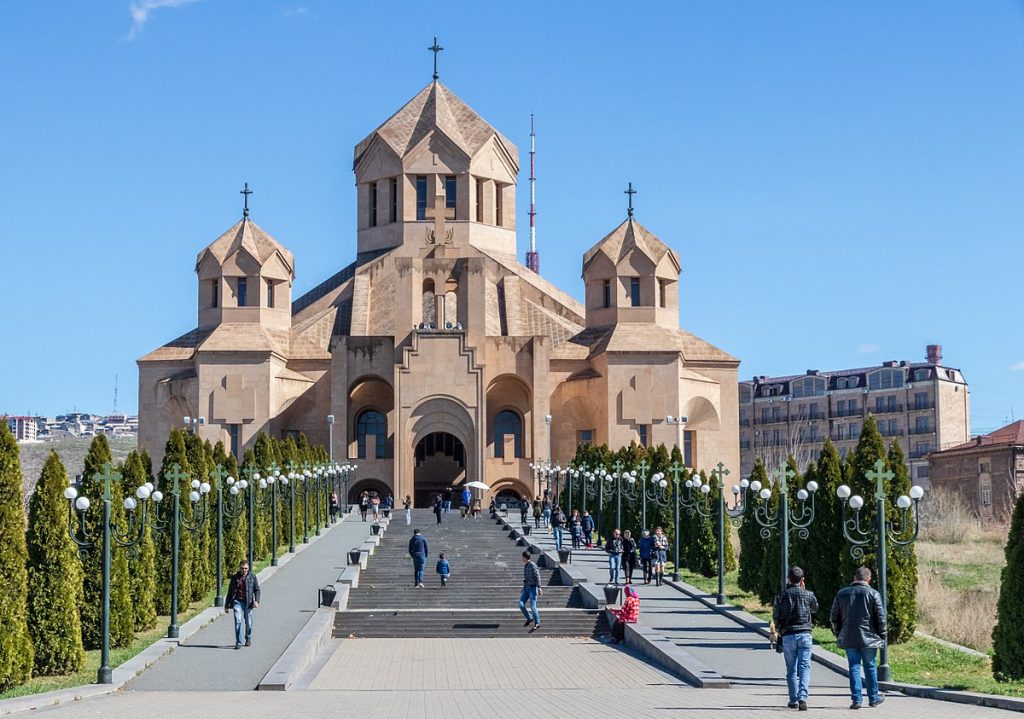
11. HISTORY MUSEUM OF ARMENIA
The history museum of Armenia, regarded as Armenia’s national museum, was founded on September 9, 1919. It was called Ethnographic-Anthropological Museum-Library at first and opened its doors on August 20, 1921.
The museum has collections in archaeology, numismatics, ethnography, modern history and restoration. It has a national collection of 400,000. 35% of the main collection is made up of archaeology related items, 8% of the collection is made up of Ethnography related items, Numismatics related items make up 45%, and 12% of the collection is made up of documents. The state financially supports the museum and owns both the collection and the building. The museum carries out conservation and restoration work and publishes works on Armenian architecture, archaeology, ethnography, and history. They also have published a series of reports on archaeological excavations since 1948.

12. MOTHER ARMENIA MONUMENT
Mother Armenia monument is one of the most popular in Yerevan. It was founded in 1967 as a victory memorial for World War II. The sculpture has a special symbolism – from its height, Mother Armenia seems to guard the peace of the city with a sword and shield.
Before the memorial construction, there was another monument, the symbol of socialism – the statue of Stalin. It was demolished and replaced by the sculpture symbolizing Armenia. Mother Armenia is a symbol of the power and unity of the Motherland.
A huge sculpture is one of the highest in Yerevan. The height of it is 22 meters, plus it has a pedestal of 51 meters high. The pedestal is a museum of the Ministry of Defense of Armenia, exhibiting documents, photographs and everything related to the Great Patriotic War and the Nagorno-Karabakh War.
The monument is located in Victory Park near the Eternal flame, on an observation deck with a breathtaking view of the city.
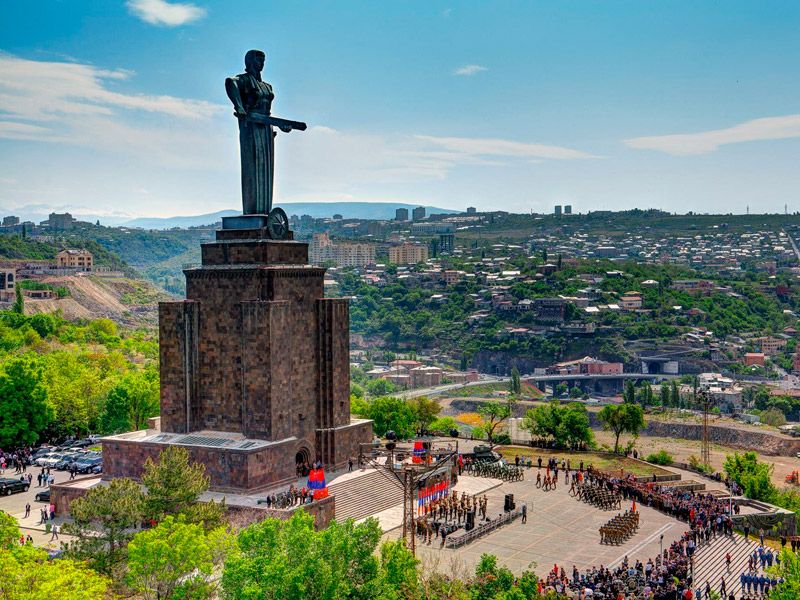
13. LOVERS’ PARK
The Park dates to the 18th century, known as Kozern Park named after the Kozern district, a northwestern suburb of old Yerevan. It was well known for its medieval cemetery and its chapel.
After the World War II, the park was redesigned in 1949 and renamed Pushkin Park by the decision of the Council of Ministers of the Armenian Soviet Socialist Republic, as part of the celebration of the 150th anniversary of the birth of the renowned Russian poet Alexander Pushkin. Later in 1970, the park was named Barekamutyun (Friendship) as a tribute to the friendship of all Soviet Union member nations. In 1995, following the independence of Armenia, by the decision of the presidency of Yerevan City Council’s civil representatives, the park was renamed Lovers’ Park Yerevan, based on the fact that the park had been a favorite rendezvous for many couples, during the second half of the 20th century.

14. GUM MARKET
GUM Market is a vast indoor space where different vendors sell dried fruits, sujukh, basturma, aromatic herbs, fresh fruits-vegetables, fresh meat, fish and ingredients for Armenian khash.
The GUM Market Armenia takes its name from the Russian abbreviation for ‘Main Universal Store’, the title given to the main department stores in former Soviet Union cities.
The store is broken down into different departments. The dried and candied goods, the butcher shop and fishmongers, the fruits and veggies, the spices, the clothing, and the oddities. The front part of the GUM Market Armenia is devoted to dried and candied fruits, nuts, spices and our all-time favorite Armenian snack, sujukh. They also love calling this ‘Armenian Snickers’. It’s a treat made of walnuts that have been dipped in grape jelly. They make for excellent edible Armenian souvenirs to bring home.
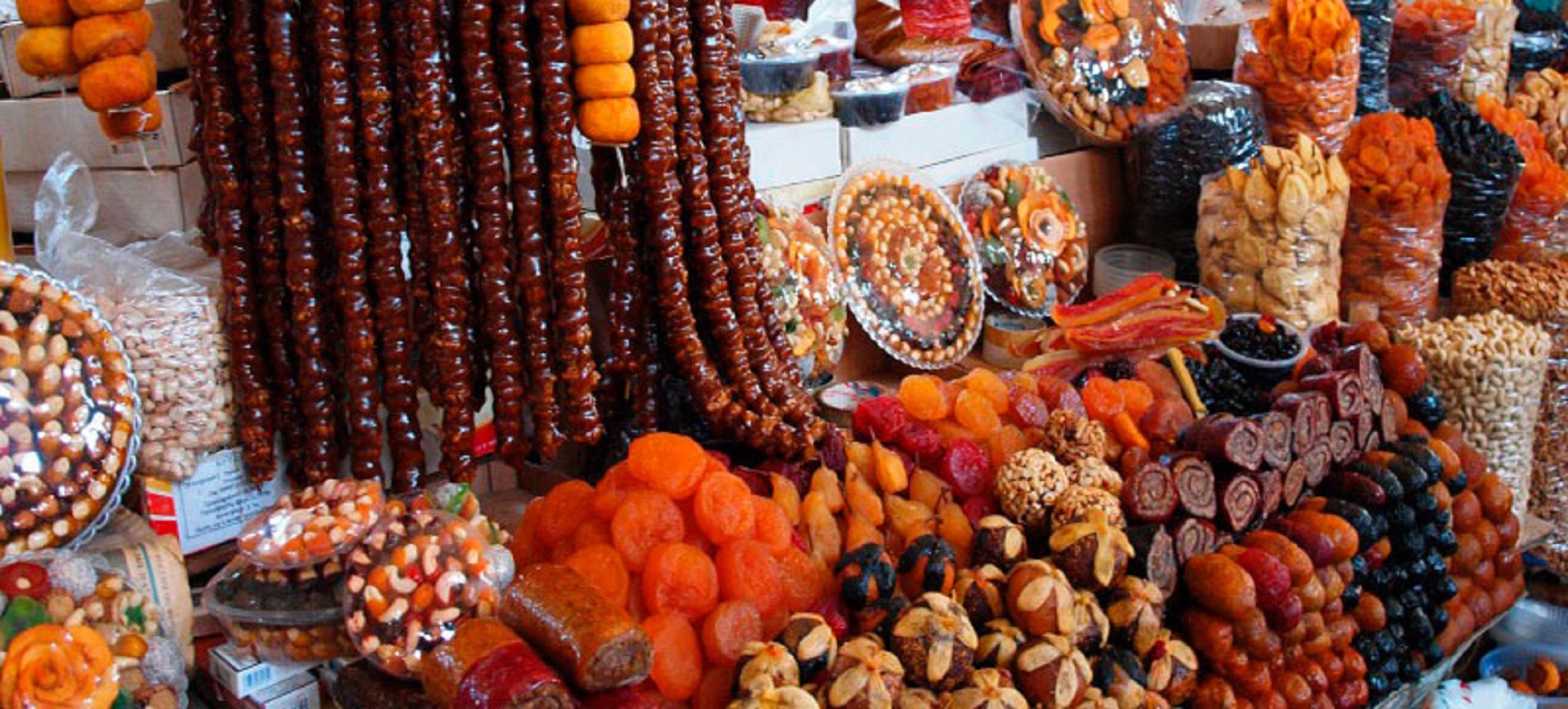
15. THE NATIONAL GALLERY OF ARMENIA
The National Gallery is the largest art gallery in Armenia, and one of the most outstanding among the countries of the former union. The collection of the National Gallery now has a total of about 26,000 items of fine and applied arts; it is represented in 56 exhibition halls. The museum’s collection includes canvases of Armenian, European, Russian artists, as well as works of decorative and applied art.
The collection of Armenian art includes masterpieces by Ivan Aivazovsky, Martiros Saryan, Arshile Gorky, and Jean Jansem. The European collection includes works by Rubens, Rodin, van Goyen, Jacob Jordan and Rousseau.




